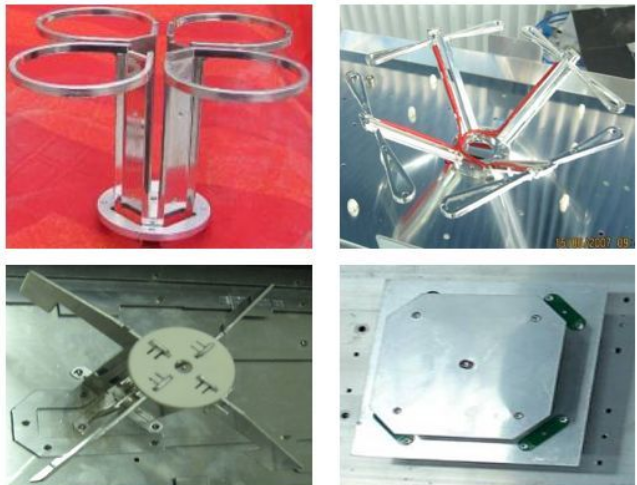There are many forms of antennas. To facilitate discussion, the following introduction will classify antennas according to different situations. They are classified according to seven aspects: work nature, use, characteristics, current distribution, wave band, and appearance.
Antennenklassifizierung
1. Classification according to nature of work
It can be divided into transmitting antenna, receiving antenna and shared transmitting and receiving antenna.
2. Classified by use, there are communication antennas, broadcast antennas, TV antennas, radar antennas, navigation antennas, direction finding antennas, etc.
3. Classification by antenna characteristics ■ From the directionality: there are strong directional antennas, weak directional antennas, directional antennas, omnidirectional antennas, needle beam antennas, sector beam antennas, etc.
■Based on polarization characteristics: wired polarized antenna, circular polarized antenna and elliptical polarized antenna. Linearly polarized antennas are divided into vertically polarized and horizontally polarized antennas.
■Based on frequency band characteristics: there are narrow-band antennas, wide-band antennas and ultra-wide-band antennas.
4. Classification according to current distribution on the antenna
There are traveling wave antennas and standing wave antennas.
5. According to the band used, there are long wave, ultra-long wave antennas, medium wave antennas, short wave antennas, ultra short wave antennas and microwave antennas. 6. According to the carrier, there are vehicle-mounted antennas, airborne antennas, satellite-borne antennas, missile-borne antennas, etc.
7. According to the antenna shape, there are whip antennas, T-shaped antennas, “shaped antennas, V-shaped antennas, diamond antennas, loop antennas, spiral antennas, waveguide port antennas, waveguide slot antennas, horn antennas, reflective surface antennas, etc.
In addition, there are Yagi antennas, log-periodic antennas, and array antennas. Array antennas include linear array antennas, planar array antennas, conformal array antennas attached to the surface of certain carriers, etc.
For the convenience of analyzing and studying the performance of antennas, most antennas can be divided into two categories according to their structural forms:
One type is a wire antenna composed of metal wires.
One type is a planar antenna composed of a metal surface or aperture surface with a size much larger than the wavelength, referred to as a surface antenna. There are also dielectric antennas. The first seven chapters of the book mainly introduce wire antennas; Chapters 8 to 13 will introduce oral-surface antennas; and the last chapter introduces microstrip antennas.
Further reading
The antenna was invented in 1894, successfully invented by the old scientist Popov, and it has a history of 124 years. Today, whether it is the daily work and life of ordinary people or the scientific research and exploration of scientists, it is inseparable from the silent dedication of Antenna King.
For example, the mobile phones we commonly use have built-in antennas, and the base stations that can be seen everywhere also have antennas inside. What kind of “wire” is an antenna, and why does it change our lives so completely?
In fact, the reason why antennas are awesome is because electromagnetic waves are awesome.
One of the main reasons why electromagnetic waves are awesome is that they are the only “mysterious force” that can propagate without relying on any medium. Even in a vacuum, it can come and go with ease and in an instant.
To take full advantage of this “mysterious power,” you need an antenna.
In radio equipment, an antenna is a device used to radiate and receive radio waves.
To put it more simply, the antenna is a “converter” – converting the guided waves propagating on the transmission line into electromagnetic waves propagating in free space, or vice versa.
What is a guided wave?
Simply put, a guided wave is an electromagnetic wave on a wire.
How does the antenna achieve conversion between guided waves and space waves?
I learned in middle school physics that when two parallel wires have alternating current, they will form electromagnetic wave radiation.
When two wires are very close, the radiation is very weak (the current direction of the wires is opposite, and the induced electromotive force generated almost cancels out).
When two wires are spread out, the radiation will be enhanced (the direction of the current in the wires is the same, and the direction of the induced electromotive force generated is the same).
When the length of the wire increases to 1/4 of the wavelength, a better radiation effect can be formed!
When there is an electric field, there is a magnetic field. When there is a magnetic field, there is an electric field. In this cycle, there are electromagnetic fields and electromagnetic waves. . .
The two straight wires that generate the electric field are called oscillators.
Usually the length of both arms is the same, so it is called a symmetrical oscillator.
A length like the following is called a half-wave symmetric oscillator.
By connecting the two ends of the wire, it becomes a half-wave symmetrical folded oscillator.
Kind of like a paint brush for painting a wall.picture
The symmetrical oscillator is by far the most classic and widely used antenna.
Theory is still a bit boring, hurry up, let’s combine it with real things.
What does a vibrator look like in the real world?
That’s it – as shown below:

The above is the explanation of ” Antenna Classification ", ich hoffe, es wird Ihnen helfen!
Keywords: lora digital transmission terminal